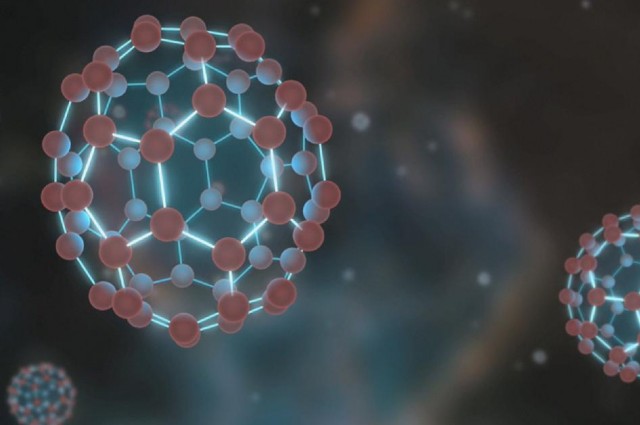Here is more information on how this chemical phenomenon works:
Buckyballs are a marvel of chemistry. These soccerball-like molecules are made up of 60 carbon atoms, all coordinated to create a tiny sphere in which the bonds between the atoms form pentagon and hexagon shapes. Buckyballs, or fullerenes, were discovered in laboratories in 1985, and were even Nobel Prize worthy. Astronomers postulated that the strange, previously inexplicable emissions they were seeing in space were from buckyballs and buckyball ions. After a long time spent trying to confirm this, scientists have finally succeeded.
The team from the University of Basel propose that the space buckyballs they observed were created within stars and then kicked out. The ejection process happens when the star burns up and shoots off its outer layers of dust and matter in a feature called a planetary nebula. Buckyballs, created within the layers of stars, pour out along with the stellar matter and some of them are ionized in the process, losing an electron and becoming positively charged. When the dazzling nebulae release some matter into the depths of space, they take some buckyballs with them. This is why the complex buckyball structure can be spotted in between stars.
This isn’t the first time that buckyballs (C60) have been spotted floating around in space. However, no one had confirmed the existence of buckyball ions (C60+) afloat in deep space until now.
We hope you enjoy the video and NASA keeps pushing the envelope with their discoveries.
thanks to iflscience for the great info
thanks to NASA for the pic
